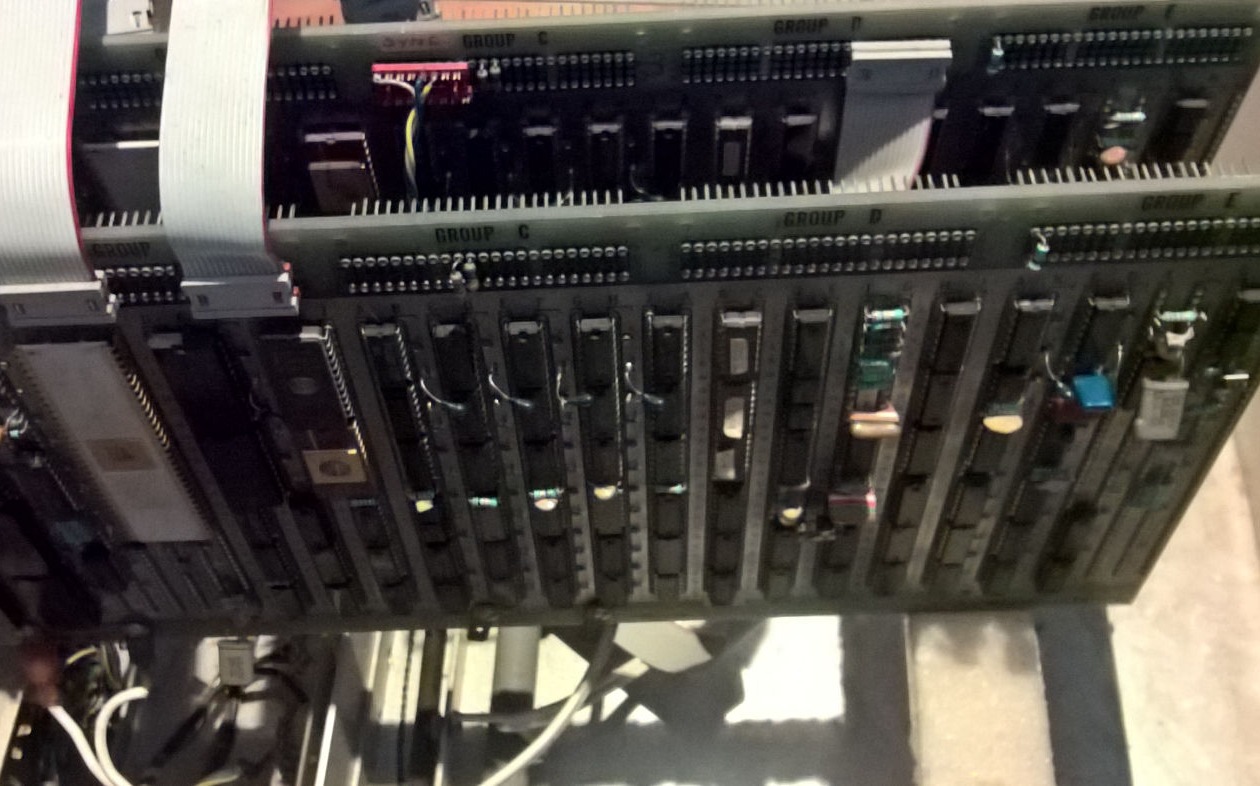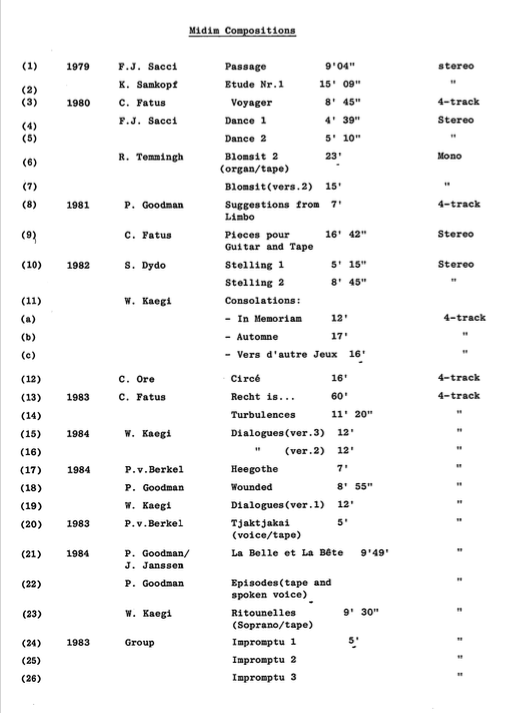Werner Kaegi (1926) started his career as musicologist, pianist and composer of contemporary music. In the sixties he was staff member of the Centre de Recherche Sonore of the Swiss Radio in Geneva, where he created many experimental compositions with electronics on stage, fusion of different styles, like jazz, strings and electronic sounds. In 1967 he wrote the successful book Was ist elektronische Musik? (What is electronic music) and in 1970 he was chosen to write the music for the Swiss contribution to the world fair in Osaka. In 1971 he emigrated to the Netherlands and became a leading member of the famous Institute of Sonology, which was housed in Utrecht.
Around 1960 Kaegi began to investigate sounds with at the time available technical equipment. From these experiments, an interesting result emerged. Namely, that the signal of a spoken vowel /a/ can be reduced to only the initial pulse in the period. This pulse could even be simplified to a simple sin-squared form. This remarkable discovery led to new research, which Kaegi carried out at the Institute of Sonology and which was financed by the Swiss and Dutch funds for scientific research. Kaegi published his early results about the analysis and synthesis of vowels, fricatives and plosives in 1973 and 1974.Between 1974 and 1978 Kaegi worked together with physicist Stan Tempelaars on new series of perception tests, controlled by the DEC PDP-15 computer, which the Institute of Sonology had acquired. In 1976 Kaegi presented VOSIM at the 53rd Convention of the Audio Engineering Society in Zurich, Switzerland and in 1978 the model was officially published in the Journal of the AES.
Computers at that time were not only huge and expensive, they coudn't make any sounds except terrible noise. So, to generate sounds hardware generators were needed, which could be controlled from the computer. The excellent technician Jo Scherpenisse built around 1974 the first microprocessor controlled VOSIM generator pair, which served for many years at Sonology.
From that time on Kaegi dived deeply into VOSIM sound synthesis for musical application. He wrote many programs in Fortran to control the generators. Finally this resulted in the complex MIDIM system and the MIDIM function theory. MIDIM was not only a software to feed the complex VOSIM generators. In essence, it reflected Kaegi's idea to develop a new way of composing as he envisaged it. He tried to convey these ideas to his students in his passionate lectures. Kaegi was invited to all major international congresses about new music research, where he demonstrated sound examples and attracted great attention with his sound duplications of natural sounds.

Around 1981 Kaegi resumed composing and created his magnum opus "Consolations" using the MIDIM/VOSIM system. Various other pieces followed, including Dialogue for Kendang and computer, in which Kaegi used the duplication of drum sounds extensively and which was performed together with Kendang (Javanese drum). With the composition Ritournelles for soprano and computer, Kaegi was awarded with a prize at the 15th Bourges International Electroacoustic Music Competition. The soprano part was performed by the Dutch soprano Dieuwke Albers.
In those days, the Institute of Sonology attracted many students and composers, mostly from abroad. Kaegi gave his morning lectures under the title "Design of musical discovery", in which he extensively discussed history, music theory, mathematics, computer science, sound synthesis and the MIDIM theory. In the afternoon, the participants practiced on the computers with the assistance of Paul Goodman and Jos Janssen. Around 50 compositions were created, some of which were presented in the series of concerts organised by the Institute. (See list below).
A steady core of students united in the MIDIM group, which remained active until 1991. The MIDIM concerts (financed by the Gaudemaus Foundation) were often held in special locations, such as churches and musea. Artists and writers were involved in the performances and the space was lightened to match the music. The MIDIM group consisted of: Jos Janssen, Paul Goodman, Pierre van Berkel, Pieter Kuipers and Heinerich Kaegi.
In 1986 the Institute of Sonology in Utrecht was closed and moved to the Royal Conservatory in The Hague. Many of the most prominent staff members left the team and the old computers that had served so well were scrapped. Heinerich Kaegi, Jos Janssen and Paul Goodman rewrote the MIDIM software and adapted it to Atari ST personal computers, which could be connected to the hardware generators. Several systems were used for some more years, one at the Conservatory of Amsterdam (Introduced there by Floris van Maanen and Pieter Kuipers). The Atari version of the MIDIM software still works on Atari emulators (for more information, please contact us).
The first software VOSIM generator was built in 1999 by Luuk Trip, written in C. The software VOS2WAV was able to transfer Vosim7 files (the standard which was defined and used by Werner Kaegi) into wave files. Recently Luuk Trip made an updated version 2.0 for Windows10. Nowadays there are many derived VOSIM generators, most of them programmed as VST.
The newest software Vosim system is built by Heinerich Kaegi and runs on GNU Octave. This software not only contains the generator (which can calculate wave files from VOSIM vectors) but also a realtime editor of VOSIM vector lines, and a compositional system based on a recent version of the MIDIM language.
Below an original list of some compositions. In the future available audio from these compositions will be published.
For more info about the composers, click on the links: Frank Sacci, Kjell Samkopf, Claude Fatus, Roelof Temmingh, Paul Goodman, Stephen Dydo, Cecilie Ore, Pierre van Berkel.
